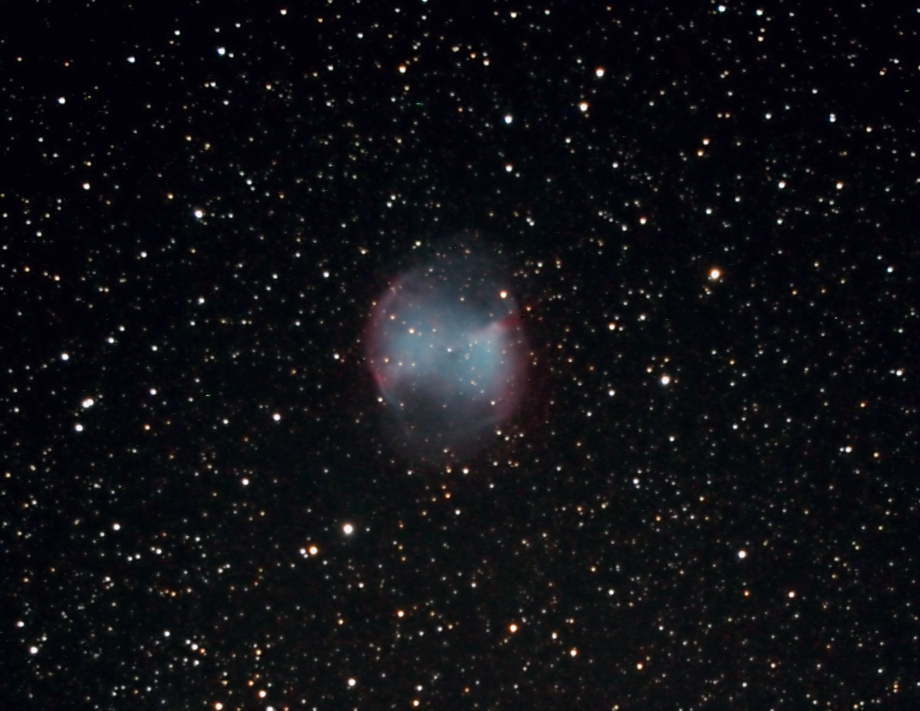 |
M27 - The Dumbbell Nebula
 |
Copyright 2005
Thom Iwancio
M27 is one of a class of objects known as "planetary" nebulae, which derives its name from the fact that early astronomers saw these objects through crude telescopes and thought they resembled planets because of their apparent round shape. It was later realized that these objects are not part of our solar system at all, but are the remnants of stars which have exploded, blowing their outer layers into space. Based on studies of the rate of expansion of M27, the time since its explosion is estimated at 3000 to 4000 years. What is left of the original star can be seen in the middle of the nebula, which is now classified as a bluish hot sub-dwarf dwarf star with a surface temperature of 85,000 degrees Kelvin. The highly energetic radiation emitted by the central star excites the gases in the blown off material to glow on their own.
M27 lies at a distance of approximately 1200 light-years.
Date/Location:
September 3, 2005 Griffin/Hunter
Observatory Bethune, SC
Instrument: Canon 10D Digital SLR through f10 8" Meade
SCT on a German Equatorial Mount
Focal Ratio: Approx. f6.3 using Lumicon Focal Reducer
Guiding: Auto through Orion ST-80 w/ SBIG ST-5
Conditions: Visually clear
Weather: 65 deg. F
Exposure: 45 minutes total @ ISO 800 (9 x 5 min exposures)
Filters: None
Processing: Focused and captured with DSLRFocus.
Frame alignment and stacking, Adaptive Richardson_Lucy deconvolution, scaling
and JPEG conversion with ImagesPlus.
Color correction and levels with Photoshop 6. Noise reduction with
NeatImage.